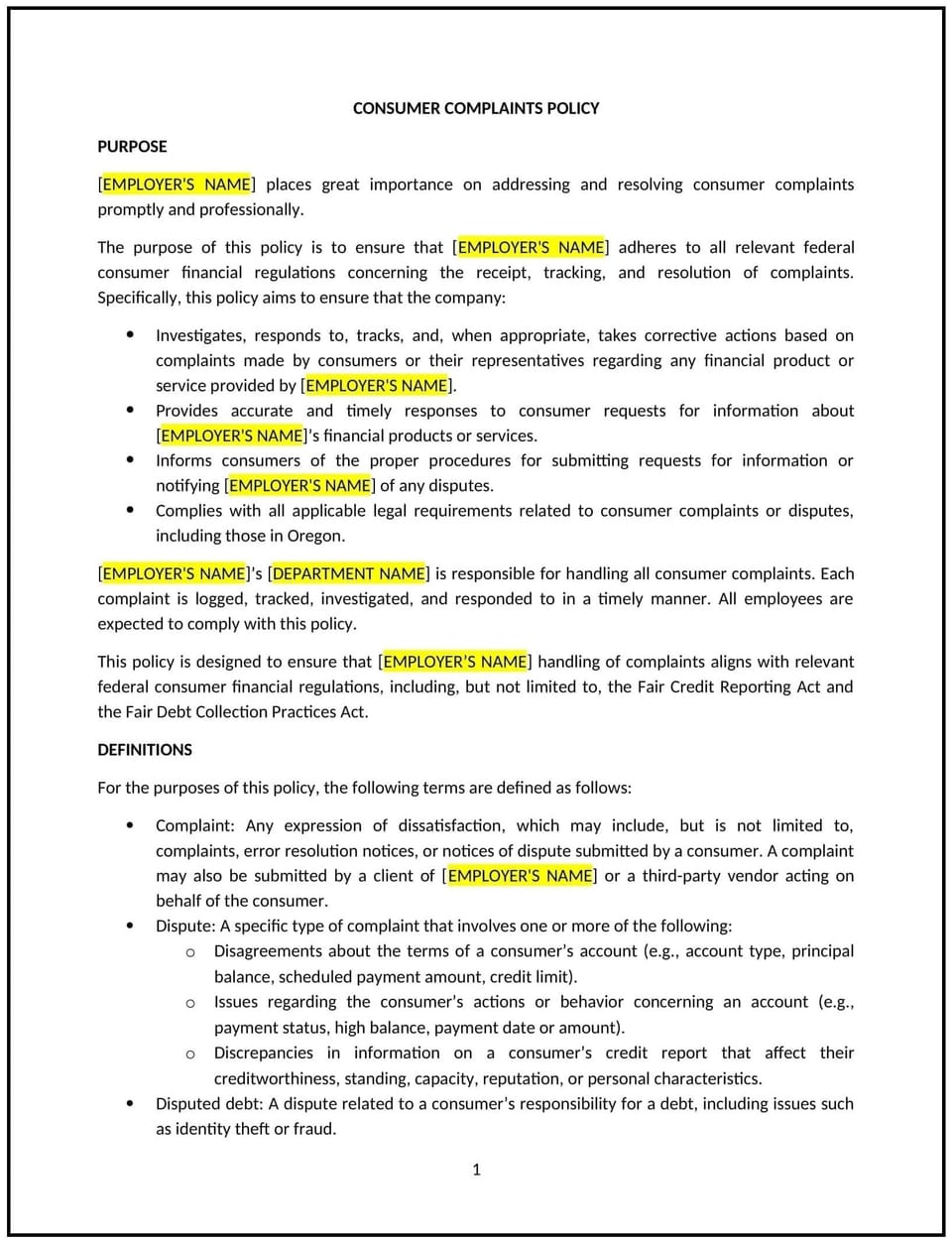Consumer complaints policy (Oregon): Free template

Consumer complaints policy (Oregon)
This consumer complaints policy is designed to help Oregon businesses establish guidelines for handling customer complaints. It outlines procedures for receiving, investigating, and resolving complaints.
By adopting this policy, businesses can improve customer satisfaction, maintain trust, and address issues promptly.
How to use this consumer complaints policy (Oregon)
- Define complaint handling: Clarify what constitutes a consumer complaint and the types of issues covered.
- Establish reporting procedures: Outline steps for customers to submit complaints, such as through email, phone, or online forms.
- Address investigation: Specify procedures for investigating complaints, ensuring fairness and impartiality.
- Provide resolution: Outline steps for resolving complaints, including timelines and communication with customers.
- Train employees: Educate staff on the policy and their responsibilities when handling consumer complaints.
- Review and update: Assess the policy annually to ensure it aligns with evolving business needs and customer expectations.
Benefits of using this consumer complaints policy (Oregon)
This policy offers several advantages for Oregon businesses:
- Improves customer satisfaction: Demonstrates a commitment to addressing customer concerns and resolving issues promptly.
- Maintains trust: Builds trust with customers by providing a clear and transparent process for handling complaints.
- Reduces risks: Minimizes the likelihood of legal issues and reputational damage related to unresolved complaints.
- Enhances efficiency: Provides a structured approach to managing complaints, ensuring consistency and fairness.
- Aligns with best practices: Offers a framework for maintaining high standards of customer service.
Tips for using this consumer complaints policy (Oregon)
- Communicate the policy: Share the policy with employees and include it in customer-facing materials.
- Provide training: Educate staff on the policy and their responsibilities when handling consumer complaints.
- Monitor compliance: Regularly review complaint handling practices and address any issues promptly.
- Address issues promptly: Take corrective action if complaints are mishandled or unresolved.
- Update regularly: Assess the policy annually to ensure it aligns with evolving business needs and customer expectations.
Q: How does this policy benefit businesses?
A: By providing a clear process for handling complaints, businesses can improve customer satisfaction, maintain trust, and reduce risks.
Q: What types of complaints are typically covered by this policy?
A: This policy covers complaints related to products, services, billing, and any other customer concerns.
Q: How can customers submit complaints?
A: Customers can submit complaints through designated channels, such as email, phone, or online forms.
Q: What should businesses do if a complaint cannot be resolved?
A: Businesses should escalate the complaint to a higher authority, such as a manager or executive, and communicate the outcome to the customer.
Q: How often should businesses review this policy?
A: Businesses should review the policy annually or as needed to ensure it aligns with evolving business needs and customer expectations.
This article contains general legal information and does not contain legal advice. Cobrief is not a law firm or a substitute for an attorney or law firm. The law is complex and changes often. For legal advice, please ask a lawyer.


